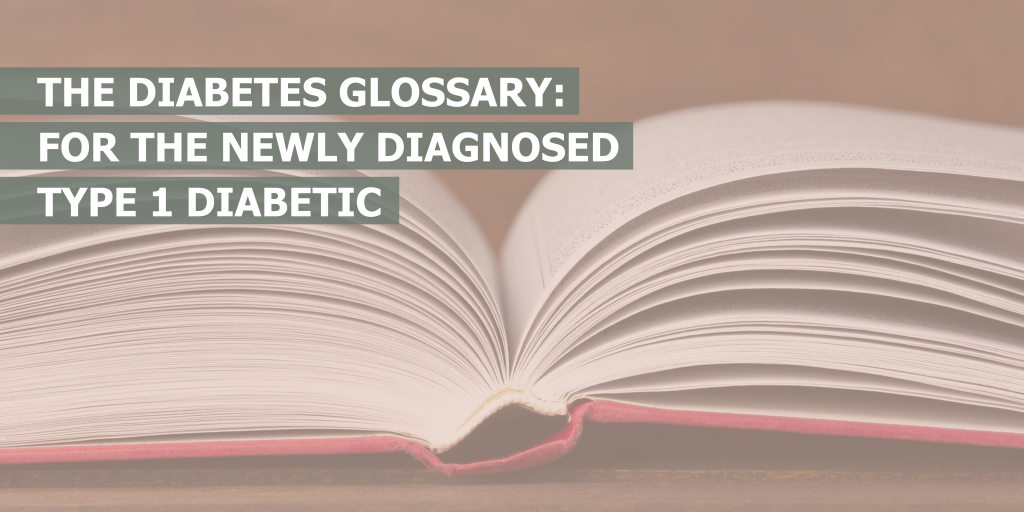hey there!
Want to cut the fluff and get to the real and raw conversations around diabetes management? Welcome to Keeping it 100 Radio: Uncensored Diabetes Conversations. Type one diabetes is HARD. Join Lissie Poyner, Certified Health Coach, Personal Trainer and NLP Practitioner for T1D’s like you.
LISTEN NOW
Meet Lissie, an Integrative Diabetes Health Coach, Certified Personal Trainer and creator of the Needles and Spoons Health & Wellness Coaching Experiences. Lissie helps overwhelmed Type One Diabetics gain more predictability in their blood sugars so they can finally take their plans off hold and welcome new life experiences. Lissie's signature 360 degree approach to coaching creates a proactive space in taking you from confused to confident in your blood sugar management.
Our 10-week high-touch hybrid coaching experience for people with Type 1 Diabetes that fills the gap between endocrinologist support and self diabetes management, and puts YOU in the driver’s seat.
Keeping It 100 gives you all of the tools, education, and support that you need to take control of your diabetes management without all of the confusion and overwhelm.
JOIN THE SELF-PACED EXPERIENCE
Join Keeping It 100
JOIN NOW
*Disclaimer: All content and information in this blog is for informational and educational purposes only. Always consult your health care provider before making any adjustments to your exercise routine or diabetes management.
When you receive a diagnosis of diabetes, it really is like learning a whole new language. Not only does it change the way that you take care of your body and the way that you look at food, but there’s all these new terms that you didn’t know existed. If you are new to the diabetes community, you might have heard these terms and have no idea what they mean or you don’t know that these terms exist. In this blog post, we are going to define some of the most common words and phrases inside the T1D community so you can learn new tools and strategies in your self-management and topics to discuss with your healthcare providers.

Prebolus
You may have heard the term ‘bolus’ which is whenever you deliver fast-acting insulin during mealtimes. However, as a far ‘pre-bolusing’ goes, that is the action of taking your insulin before you eat. This can be 5 minutes, this can be 10 minutes, or however long you find appropriate when speaking to your healthcare provider. The key reason for doing this is because synthetic insulin takes time to start working. Unlike people without diabetes, the pancreas will automatically secrete insulin whenever it detects carbohydrates or a rise in blood sugar levels. Utilizing a prebolus, or taking insulin before eating, can allow the injected insulin to be readily available once you start your meal and minimize the potential impact of post-meal spikes. There are a lot of factors that can determine your prebolus timing so make sure to discuss this topic with your healthcare providers to assess what time frame is best for you.
Time in Range
When you were diagnosed, you have probably heard of the terms “A1C” or “average blood sugar” but you likely are new to the term of time in range or time in target. While your A1C is a great reference point, it is hard to visualize what the whole picture looks like with just one static number. When you receive your A1C, you have no idea whether your blood sugar numbers are having significant fluctuations. If you are on a continuous glucose monitor (CGM), like Dexcom, Medtronic Guardian, or Freestyle Libre, you will be able to assess your time in range or time in target using their correlated apps. If you are on fingersticks Glooko, an app that can interrupt your finger stick data into time in range, is also available for use. When you look at your time in range, you will see a percentage between 0-100%. Most healthcare providers recommend maintaining a time in range of 70% with the target range of 70-180mg/dL. The number that you see will tell you where your blood sugar levels are spending the most time and will break it down into time in range in addition to the time that you spend out of range. It can be incredibly helpful to see what amount of time you are spending in range and out of range so that you and your healthcare providers can further assess areas to focus on within your management.
Standard Deviation
Another important piece of data to be familiar with is standard deviation. Standard deviation will be able to tell you the amount of fluctuations or variation that you are having from your average blood sugar. For example if your average blood sugar is 150md/dL and you have a standard deviation of 40mg/dL that means that your blood sugar typically falls between the range of 110-190mg/dL. In general the smaller the standard deviation the better control you have, but keep in mind that your blood sugar is meant to rise and fall. Even people without diabetes will have variation in their blood sugar levels so it is important to discuss with your healthcare provider what is the recommended range for your management.
Insulin Sensitivity
Insulin sensitivity refers to how efficiently or effectively your insulin is acting within your body. In general, it takes your body about 20 minutes for insulin to start working. In regards to insulin sensitivity, the higher your insulin sensitivity the quicker that insulin starts to work while the lower your insulin sensitivity is, or higher insulin resistance, the slower that insulin starts to work. There are a variety of factors that may influence your insulin sensitivity and resistance, but it can be an important tool in your management.
Rage Bolus
Rage bolusing is not recommended, but at some point or something we are all guilty of doing it whether you are aware of it or not. If you’ve ever experienced a stubborn high blood sugar, you know how frustrating it is when every time you look at your blood sugar it is still sitting at the same number. As the frustration builds up, often your patience does too. You end up dosing again and again because every time you check your blood sugar still hasn’t budged. Then all of a sudden, you see double arrows down and feel a low blood sugar coming on. A rage bolus can become really dangerous because you are stacking insulin so you want to be mindful of how long ago your last dose was and give that insulin time to work.
Compression Low
If you are wearing a continuous glucose monitor (CGM), it can give false readings especially in the middle of the night. Your blood sugar can be in perfect range and then all of a sudden you are getting alarms screaming at you saying L-O-W. And in your half asleep daze, you start chugging juice or stuffing your face in the kitchen. But suddenly, your blood sugar is back in range and now is climbing up incredibly fast. What gives? This is a classic compression low and this happens because falling asleep on your CGM may cause inaccurate readings due to the pressure. If this happens to you, you can always double check with a fingerstick to confirm what your blood sugar reading is and roll over so you’re no longer laying on your device.
Blind Bolus
If you’ve ever been in a situation where you couldn’t check your blood sugar (like your CGM died and your didn’t have a meter on you) or you just don’t feel like getting up to check your blood sugar, you will have no idea what your current blood sugar level when you are dosing. This is called a blind bolus and it can be dangerous because if your blood sugar is high and you are only taking insulin for the carbohydrates in your meal, you aren’t taking enough insulin to bring your blood sugar back into range. Reversely if your blood sugar is at the lower end, you could potentially be dosing for too much insulin and cause a low blood sugar. Whether you are on injections or a pump, it is important that you dose with all of the information in front of you so you have the best chance at keeping your blood sugars within range.
Honeymoon Period
Those of you who are recently diagnosed with type 1 diabetes may have heard of the term “honeymoon period.’ The honeymoon period occurs after receiving a diabetes diagnosis and often lasts for a few months or even longer. During this time period, your pancreas is still working and giving you a little bit of insulin here and there. It can be an incredibly frustrating time for people with diabetes as you never really know exactly when your pancreas is going to decide to give an extra push of insulin or when it is going to decide to stop working altogether. While honeymooning, a lot of people with diabetes may experience more flexibility with their management. They may be able to eat more meals uncovered or without insulin at all. If you are curious about whether or not you are honeymooning, you can discuss this with your healthcare provider and there are certain laboratory tests they can order to assess whether or not your pancreas is still releasing insulin or not.
Multiple Daily Injections (MDI)
Multiple daily injections, or MDI for short, is the management method that most people with diabetes will start off with when they are diagnosed. With multiple daily injections, you are often required to take two types of insulins: basal and bolus insulin. Your basal insulin is usually in the form of long-lasting insulin, like Lantus, Tresiba, or Toujeo. Your basal insulin will work in the background over 24 hours to help keep your blood sugar levels steady throughout the day. The other type of insulin that is required is bolus insulin. Bolus insulin is usually given using fast-acting insulin, like Novolog, Humalog, Fiasp, Lymjev, or Aprida. Your bolus insulin is what you will take at mealtimes. When using MDI, you will likely take injections anywhere from three to six or more times a day in order to keep your blood sugar range in target.
Getting diagnosed with diabetes can be overwhelming and confusing as you are trying to navigate a whole new lifestyle and learn all new terminology. Make sure you bookmark this post for reference as you continue to navigate life with diabetes. If you want to learn more about the things I wish my endocrinologist told me when I was diagnosed, check out Episode 19: FOR THE NEWLY DIAGNOSED T1D: All the things I wish I knew available now on Spotify and Apple Podcasts.


Leave a Reply
You must be logged in to post a comment.
hey there!
Meet Lissie, an Integrative Diabetes Health Coach, Certified Personal Trainer and creator of the Needles and Spoons Health & Wellness Coaching Experiences. Lissie helps overwhelmed Type One Diabetics gain more predictability in their blood sugars so they can finally take their plans off hold and welcome new life experiences. Lissie's signature 360 degree approach to coaching creates a proactive space in taking you from confused to confident in your blood sugar management.
Want to cut the fluff and get to the real and raw conversations around diabetes management? Welcome to Keeping it 100 Radio: Uncensored Diabetes Conversations. Type one diabetes is HARD. Join Lissie Poyner, Certified Health Coach, Personal Trainer and NLP Practitioner for T1D’s like you.
LISTEN NOW
Our 10-week high-touch hybrid coaching experience for people with Type 1 Diabetes that fills the gap between endocrinologist support and self diabetes management, and puts YOU in the driver’s seat.
Keeping It 100 gives you all of the tools, education, and support that you need to take control of your diabetes management without all of the confusion and overwhelm.
JOIN THE SELF-PACED EXPERIENCE
JOIN KEEPING IT 100
JOIN NOW
Our specialty? Helping you identify the very first action you need to take for success.
We've supported hundreds of women in their type one journey.
Walk Into The Next Phase Of Your Diabetes Journey With A Step-By-Step Plan.
TAKE THE QUIZ
Needles and Spoons Health & Wellness 2019 - 2024 / Privacy policy
GET CERTIFIED
Creating the next generation of ethical coaches
